Ditapis dengan

FENOMENA FLUKS PANAS KRITIS PADA PENDINGINAN MODEL SUNGKUP AP1000 DENGAN UDAR…
Menelusuri Fenomena Fluks Panas Kritis pada Pendinginan Reaktor AP1000 Dalam dunia teknologi nuklir, keselamatan menjadi aspek utama dalam desain reaktor generasi terbaru. Salah satu inovasi penting yang diterapkan pada reaktor AP1000 adalah sistem pendinginan pasif yang memanfaatkan sirkulasi udara alami untuk menjaga stabilitas suhu reaktor. Namun, penelitian terbaru mengungkap adanya feno…
- Edisi
- -
- ISBN/ISSN
- 1412-3258
- Deskripsi Fisik
- 14p. : Illus. ; pdf
- Judul Seri
- Penguatan Pengawasan Keselamatan, Keamanan dan Seifgard Nuklir untuk Menyongsong Introduksi Pembangkit Listrik Tenaga Nuklir (PLTN) di Indonesia
- No. Panggil
- 621.48 TRI F
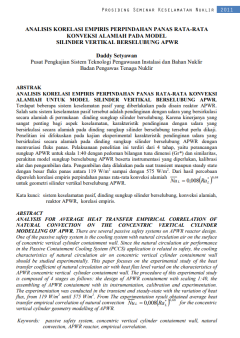
ANALISIS KORELASI EMPIRIS PERPINDAHAN PANAS RATA-RATA KONVEKSI ALAMIAH PADA M…
Peneliti Batan Temukan Cara Pendinginan Pasif Reaktor APWR yang Lebih Efektif Sebuah terobosan penting dalam keselamatan reaktor nuklir berhasil dicapai oleh Daddy Setyawan dari Badan Pengawas Tenaga Nuklir (BAPETEN). Melalui penelitian bertajuk "Analisis Korelasi Empiris Perpindahan Panas Rata-Rata Konveksi Alamiah pada Model Silinder Vertikal Berselubung APWR", Setyawan mengungkap metode p…
- Edisi
- -
- ISBN/ISSN
- 1412-3258
- Deskripsi Fisik
- 10p. : Illus. ; pdf
- Judul Seri
- Penguatan Pengawasan Keselamatan, Keamanan dan Seifgard Nuklir untuk Menyongsong Introduksi Pembangkit Listrik Tenaga Nuklir (PLTN) di Indonesia
- No. Panggil
- 621.4025 SET A
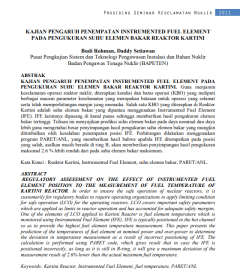
KAJIAN PENGARUH PENEMPATAN INSTRUMENTED FUEL ELEMENTPADA PENGUKURAN SUHU ELEM…
Pengawasan Ketat Reaktor Kartini: Akurasi Pengukuran Suhu Elemen Bakar Jadi Fokus Utama Dalam upaya menjaga keselamatan operasional Reaktor Kartini, Badan Pengawas Tenaga Nuklir (BAPETEN) melakukan kajian penting terkait pengaruh penempatan Instrumented Fuel Element (IFE) dalam pengukuran suhu elemen bakar. Kajian ini menjadi krusial karena suhu elemen bakar adalah salah satu parameter kesel…
- Edisi
- -
- ISBN/ISSN
- 1412-3258
- Deskripsi Fisik
- 9p. : Illus. ; pdf
- Judul Seri
- Penguatan Pengawasan Keselamatan, Keamanan dan Seifgard Nuklir untuk Menyongsong Introduksi Pembangkit Listrik Tenaga Nuklir (PLTN) di Indonesia
- No. Panggil
- 621.4836 ROH K

PERSYARATAN KETANGGUHAN PATAH MATERIAL BEJANA REAKTOR DALAM EVALUASI LAPORAN …
Keamanan Nuklir: Pentingnya Ketangguhan Material Bejana Reaktor untuk Keselamatan Nasional Dalam upaya memastikan keselamatan operasional Pembangkit Listrik Tenaga Nuklir (PLTN), ketangguhan patah material bejana reaktor menjadi salah satu persyaratan penting yang wajib dipenuhi sebelum mendapatkan izin konstruksi dari Badan Pengawas Tenaga Nuklir (BAPETEN). Bejana reaktor berperan vital …
- Edisi
- Hal 30-38
- ISBN/ISSN
- 1412-3258
- Deskripsi Fisik
- 9p. : Illus. ; pdf
- Judul Seri
- Penguatan Pengawasan Keselamatan, Keamanan dan Seifgard Nuklir untuk Menyongsong Introduksi Pembangkit Listrik Tenaga Nuklir (PLTN) di Indonesia
- No. Panggil
- 620.11296 LAS P
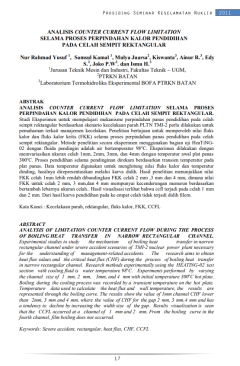
ANALISIS COUNTER CURRENT FLOW LIMITATION SELAMA PROSES PERPINDAHAN KALOR PEND…
Terobosan Penelitian UGM & BATAN: Ungkap Cara Mendinginkan Reaktor Nuklir Saat Kecelakaan Parah! Tim peneliti dari Universitas Gadjah Mada (UGM) bersama Badan Tenaga Nuklir Nasional (BATAN) berhasil melakukan studi penting terkait proses pendinginan reaktor nuklir yang mengalami kerusakan parah. Penelitian ini mengkaji fenomena perpindahan panas pendidihan dalam celah sempit—situasi yang t…
- Edisi
- Hal 17-29
- ISBN/ISSN
- 1412-3258
- Deskripsi Fisik
- 13p. : Illus. ; pdf
- Judul Seri
- Penguatan Pengawasan Keselamatan, Keamanan dan Seifgard Nuklir untuk Menyongsong Introduksi Pembangkit Listrik Tenaga Nuklir (PLTN) di Indonesia
- No. Panggil
- 621.4021 Rah A

DISAIN KONSEPTUAL SISTEM PEMURNIAN PENDINGIN PRIMER MENGGUNAKAN MEMBRAN SILIN…
Inovasi Anak Bangsa: Sistem Pemurnian Gas Helium untuk Reaktor Kogenerasi Ramah Lingkungan Indonesia terus menunjukkan kemajuan dalam teknologi nuklir ramah lingkungan. Salah satu inovasi terbaru datang dari Pusat Teknologi Reaktor dan Keselamatan Nuklir (BATAN) yang berhasil merancang sistem pemurnian gas helium untuk reaktor kogenerasi berbasis RGTT (Reaktor Gas Temperatur Tinggi). Sistem …
- Edisi
- Hal 1-16
- ISBN/ISSN
- 1412-3258
- Deskripsi Fisik
- 16p. : Illus. ; pdf
- Judul Seri
- Penguatan Pengawasan Keselamatan, Keamanan dan Seifgard Nuklir untuk Menyongsong Introduksi Pembangkit Listrik Tenaga Nuklir (PLTN) di Indonesia
- No. Panggil
- 621.48 SUP D
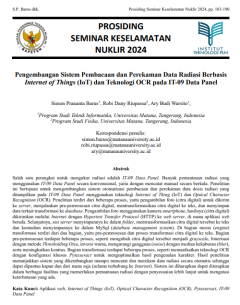
Pengembangan Sistem Pembacaan dan Perekaman Data Radiasi Berbasis Internet of…
Dunia keselamatan radiasi di Indonesia kini memasuki babak baru dengan hadirnya inovasi berbasis teknologi Internet of Things (IoT) dan Optical Character Recognition (OCR). Dalam Seminar Keselamatan Nuklir 2024, tim peneliti dari Universitas Matana yang dipimpin oleh Simon Prananta Barus memperkenalkan sistem pembacaan dan perekaman data radiasi otomatis menggunakan IT-09 Data Panel. Jika se…
- Edisi
- -
- ISBN/ISSN
- 1412-3258
- Deskripsi Fisik
- 8p. : Illus. ; pdf
- Judul Seri
- -
- No. Panggil
- 621.48 Pra P

Optimisme Potensi Pemanfaatan Tenaga Nuklir dalam Mendukung Target Nol Emisi …
Dalam upaya mewujudkan target ambisius Net Zero Emission (NZE) pada tahun 2060, tenaga nuklir kini mulai dilirik sebagai solusi strategis Indonesia untuk menurunkan emisi gas rumah kaca (GRK). Hal ini terungkap dalam Prosiding Seminar Keselamatan Nuklir 2024 yang disampaikan oleh Hermawan Puji Yuwana dari BAPETEN. Seiring meningkatnya kekhawatiran dunia terhadap dampak perubahan iklim akibat…
- Edisi
- -
- ISBN/ISSN
- 1412-3258
- Deskripsi Fisik
- 9p. : Illus. ; pdf
- Judul Seri
- -
- No. Panggil
- 621.48 PUJ O

Pengaruh Variasi Tegangan Tabung pada Pesawat Sinar-X di RS Islam Yogyakarta …
Sebuah penelitian menarik yang dipresentasikan dalam Seminar Keselamatan Nuklir 2024 mengungkap pengaruh signifikan variasi tegangan tabung pada pesawat sinar-X terhadap kualitas radiografi di RS Islam Yogyakarta PDHI. Penelitian ini dilakukan oleh Ardian Eka Nugraha, Rohmawati Metaningrum, dan Septiani dari Prodi Teknik Radiodiagnostik dan Radioterapi Citra Bangsa Yogyakarta. Penelitian ini…
- Edisi
- -
- ISBN/ISSN
- 1412-3258
- Deskripsi Fisik
- 7p. : Illus. ; pdf
- Judul Seri
- -
- No. Panggil
- 616.0757 EKA P

Factors that Caused Artifacts on Soft Copies Radiograph Result of Computed Ra…
Hasil rontgen digital atau Computed Radiography (CR) kerap kali menjadi acuan utama dalam diagnosis medis. Namun, siapa sangka, gambar yang dihasilkan tidak selalu sempurna? Artefak atau gangguan visual sering muncul, dan penelitian terbaru di Rumah Sakit Akademik (RSA) UGM Yogyakarta mengungkap penyebab utamanya! Penelitian yang dipaparkan dalam Seminar Keselamatan Nuklir 2024 oleh Penina, …
- Edisi
- -
- ISBN/ISSN
- 1412-3258
- Deskripsi Fisik
- 6p. : Illus. ; pdf
- Judul Seri
- -
- No. Panggil
- 616.0757 PEN F
 Karya Umum
Karya Umum  Filsafat
Filsafat  Agama
Agama  Ilmu-ilmu Sosial
Ilmu-ilmu Sosial  Bahasa
Bahasa  Ilmu-ilmu Murni
Ilmu-ilmu Murni 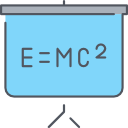 Ilmu-ilmu Terapan
Ilmu-ilmu Terapan  Kesenian, Hiburan, dan Olahraga
Kesenian, Hiburan, dan Olahraga  Kesusastraan
Kesusastraan  Geografi dan Sejarah
Geografi dan Sejarah